Introduction
This study focuses on the rural sectors of Eastern and Northern regions of India for the analysis of water disinfection practices and technologies used. In the East, the report emphasizes on the scenario of West Bengal (WB) which has over 91 million inhabitants (as of 2011) with 68.13% of the population living in rural areas. About 19% of rural Indians do not have access to clean drinking water are from West Bengal. Almost 44% of the rural habitations have slipped back in the water coverage from 2012 to 2014.1 Uttar Pradesh (UP), situated in northern India, is the largest and most populated state in the country. The 2011 census determined that 70-80% of the total population of the state resides in rural areas and for decades, the government of India has been taking measures to stretch the reach of water supply to these remote populations. The major sources of drinking water in the rural household include tube well/hand pump (90%), well water (7.8%), and piped water (2%) as per 2005-06 (Figure 1).2 However, the growing concern lies in the quality of water collected and used by people in these rural communities.
Figure 1: Wells, handpumps, and piped water supply.
Water Quality Scenario:
Primary water sources for domestic supply include surface water and groundwater. The major factors determining the water quality include physical, chemical and biological factors. For surface water, most crucial parameter in drinking water quality is the presence of pathogenic microorganisms which is determined by the biological oxygen demand (BOD) and total coliform count. Water-borne diseases associated with these pathogens include diarrhea, gastrointestinal illness, cholera etc. This pathogenic contamination from water is removed by disinfection. The Central Pollution Control Board (CPCB) in India classifies drinking water sources in two categories:
| Designated best-use | Class of water | Criteria |
| Drinking Water Source without conventional treatment but after disinfection | A | Total Coliforms Organism MPN/100ml shall be 50 or less; pH between 6.5 and 8.5; DO < 6mg/l; BOD 5 days (20C) <2mg/l |
| Drinking water source after conventional treatment and disinfection | C | Total Coliforms Organism MPN/100ml shall be 5000 or less; pH 6 to 9; DO >4mg/l; BOD 5 days (20C) <3mg/l |
For groundwater quality, physical parameter TDS (Total dissolved solids), toxic ions and metals like fluoride, arsenic, nitrates, lead are found to be of major concern in North India. In West, microbial contamination and TDS is found beyond permissible limits in all sites: open water bodies, municipal piped supply, domestic storage areas and ground water.3
Treatment Practices/Technologies:
Household-based methods:
- Boiling: One of the more simple and inexpensive ways to disinfect water.
- Solar Water Disinfection (SODIS): A low-cost, WHO-verified method to disinfect water by filling PET bottles and setting them out in sunlight for a few hours. SODIS kills germs by the UV-A rays in sunlight.
- Treating with excess lime: Lime is used for water softening but adding excess lime can also disinfect water. Lime raises the pH making it extreme alkaline which is detrimental for the viruses and bacteria to survive.
- Treating with chemical compounds like alum, bleaching powder, potassium permanganate: These are some chemicals commonly used to disinfect well water in rural India. Correct doses of these compounds should be added to purify the water but additional techniques might also be required to remove the turbidity and TDS content.
- Sand filtration or gravity filter technique: Slow sand filtration is an effective low-cost filtration technique which can remove particulates and microbial contaminants from water. It consists of different layers of sand and pebbles of different sizes. An active biolayer can also develop a few centimeters below the top layer which captures organic contaminants efficiently from inlet water.
- Ceramic Water Filters: These filters work similar to trap chemical and biological contaminants. The water seeps through the porous clay material. While these pores are large enough for water to seep, they are small enough to restrict and trap biological contaminants.
Community-based methods:
- Chlorination: The most common disinfection practice used for community water supply is chlorination. In Northern India, 30% of the water supply schemes in rural India are piped and 70% are hand pump based. In piped water supply schemes, water is pumped to an overhead tank (OHT) and supplied to households through a distribution network. The water in the OHT is chlorinated before disinfection. For remaining 70%, water treatment has to provided separately.4
- HRF-SSF-ACF Unit: Eco-India is a collaborative research project of the country’s supreme educational institutes and European Union aims to supply safe cost-effective community-based drinking water based on both surface and groundwater-based schemes in WB. They use a combination of Horizontal Roughing Filter-Slow Sand Filtration- Activated Carbon Filter.
Government schemes/works for rural water supply:
- Eco-India Project
- National Rural Drinking Water Program
- Quality Problem Village (QPV) Water Supply Program
- Pradhan Mantri Gramodaya Yojna (PMGY)
- Water Supply Program in SC/ST Habitations
- Swajal Dhara
- Minimum Needs Program (MNP)
- Bharat Nirman Scheme
- West Bengal Drinking Water Sector Improvement Project
Survey Results in Eastern and Northern India
Nine village communities from Uttar Pradesh and 15 from West Bengal are surveyed in this study. All the villages UP and 9 from WB are dependent on ground water for drinking, irrigation as well as household purposes. The water is pumped via handpumps or submersible pumps In UP villages (Mulkapur, Kartarpur, Bansathi, Mailarganj and Baharampur) water is pumped at a depth of 300-400 ft. However, this pumping depth can vary from place to place. These villages were dependent on wells a few years ago but it decreased tremendously since the government installation of pumps. Currently, there is only 1 active well in Bansathi.
Figure 2: (a) Handpump in Mulkapur (b) Well in Jhargram.
However, in WB villages Suri (district Birbhum) and Jhargram people are depended on well water. A few houses in WB villages (Jhargram, Sunderban, Duttapukur and Naxalbari) are found to use ceramic candle filter for filtration and disinfection. Some use indigenous practice of adding calcium carbonate from time to time when they find the water unpleasant. According to villagers, the sweet taste and clear appearance are common parameters to test water, oblivious of the harmful contaminations invisible to the naked eye. If the two criteria are met, they consider it safe.
Figure 3. Ceramic candle filters and Eureka Forbes Gravity Filter
The water quality condition is, however, poor for the other villages in UP (Baikunthpur, Saksupurva, Pratappurhari, Ishwariganj and Hridyapur). The ground water in these villages sometimes appear yellowish in color and is very turbid. Nevertheless, no measures or technologies were taken to disinfect or treat the water in these villages.
For the villages in West Bengal (Rustam Nagar, West Medinipur, Ranaghat,Bhanta, Liluah, Dutta Pukur and Balakhali), piped water supply is available from private and government agencies. Although the water is treated and chlorinated at the source, it is common for contamination to occur by the time the water reaches the end user.
Higher income households from some villages in both the regions are found to use packaged water camphors, local gravity filters and RO-UV filters at home, as per affordability and convenience.
This survey concludes that the rural sectors in Northern and Eastern part of India lacked access to affordable water disinfection and treatment. The residents also faced frequent gastric and intestinal problems which could be a consequence of waterborne microbes. The efforts to provide disinfected water to low-income and rural communities could be greatly improved, especially from the private sector. Currently, the aim of the government schemes and initiatives is to provide access to water to all the sectors of the country. The idea of “safe” water access or water treatment solutions in all the rural areas is still a distant dream.
Studies on the water quality of groundwater has shown the presence of fecal contamination which is detected by MPN test. Groundwater in rural areas of Uttar Pradesh reported MPN value from 4-15 for 100 ml, which ideally should be 0 as per BIS and WHO drinking water specifications.5 The fecal contamination can be strongly correlated with the open defecation practice and lack of hygienic sanitation in rural India. The government has been very active in improving sanitation in India recently. Other sources for biological contamination are surface runoff contamination from agricultural fields, seepage from dumping areas.
References
- Chaudhuri, S., Roy, M., Overview of rural water supply sector in West Bengal, India: Challenges and concerns. International Journal of Innovative Research in Science, Engineering and Technology, Vol. 5, Issue 6, June 2016.
- Tiwari, R., Nayak, S., Drinking water and sanitation in Uttar Pradesh: A regional analysis. Journal of Rural Development, Vol. 32, Issue 1, pp. 61 – 74, 2013.
- Central Pollution Control Board, Status of Groundwater Quality in India: Part I. Groundwater Quality Series (GWQS/09/2006-07)
- State Water and Sanitation Mission, AE & EMF for RWSS Sector in 28 Districts of Uttar Pradesh: Final Report. 317719/ENI/IWU/05/05. 29 March 2013.
- Singh, S., Ali, A., Upadhyay, K. K., and Wani, K. A., An Investigation on Physical, Chemical and Bacteriological Quality of Drinking Waters and Health Issues of the Rural Areas in Uttar Pradesh, India. Biological Forum – An International Journal, Vol. 8, Issue 2, pp. 350 – 355, 2016.
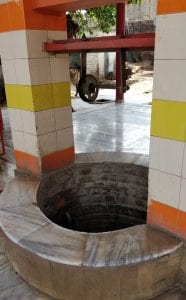
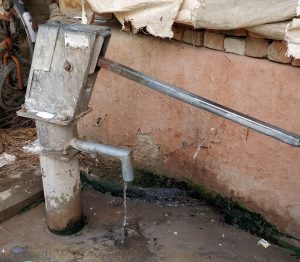
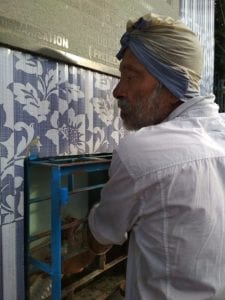
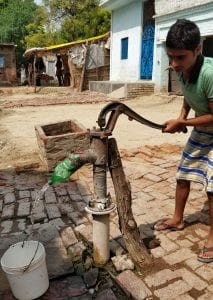
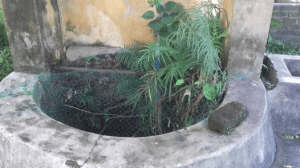
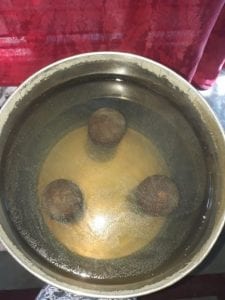
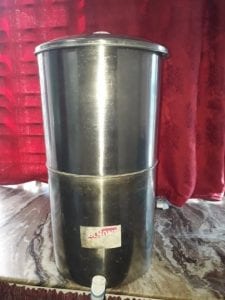
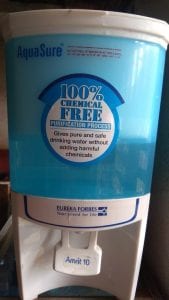
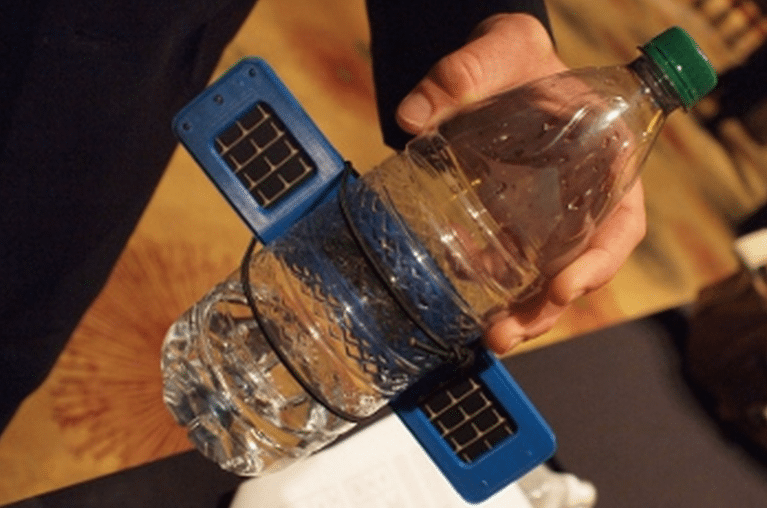
No Comments.